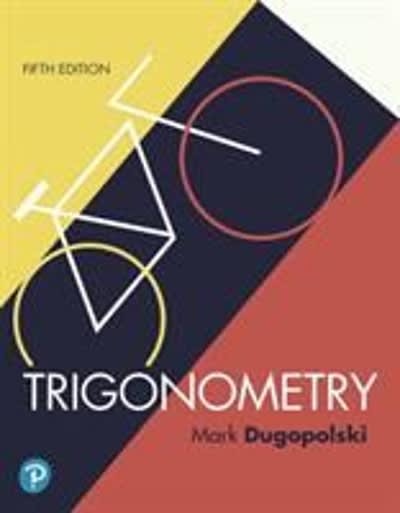Question
SCENARIO: Blood donations from volunteers serve a crucial role in the nation's health care system. Are Americans any more or less generous about donating blood
SCENARIO: Blood donations from volunteers serve a crucial role in the nation's health care system. Are Americans any more or less generous about donating blood in some years than others? To investigate this question, we can analyze data from the General Social Survey, which is a national survey conducted every two years on a nationwide random sample of adult Americans. This study compared the years 2002 and 2004. In 2002, 1362 adults were sampled and 210 of them donated blood in the last 12 months. Whereas in 2004, 1336 people were sampled with 230 people donating blood in the last 12 months.
1. Is this an observational study or experiment? How do you know?
2. Did this study make use of random sampling, random assignment, both, or neither? Also explain what your answer means in terms of the scope of conclusions that can be drawn from these data.
3. What is the explanatory and response variables? What is their type?
4. Create the 2x2 table
| TOTAL | |||
| TOTAL |
5. State the parameter (in terms of the long-run difference). (taking the 2002 proportion minus the 2004 proportion).
6. Write the hypothesis in symbols.
7. For each year, calculate the (conditional) proportion of adult Americans sampled who donated blood in the previous 12 months. Use appropriate symbols to represent them. Also calculate the difference between these sample proportions.
8. Calculate the Relative Risk. What is this telling you?
9. Use the Two Proportions Applet to conduct a simulation analysis to approximate a p-value for testing the hypotheses that you stated in #6. (Use 1000 replications)
- P-value:
- Standardized Statistic:
10. Can the Theory based method be used for this scenario? Justify your answer.
11. Calculate the standardized statistic using the Theory-Based Approach (Using formula for Standard Error)
12. Compare your standardized statistic from the theory-based and simulation approach.
13. Calculate 95% Confidence Interval using the Theory-basedapproach and interpret the confidence interval in context.
14. Does the conclusion about the hypotheses from the theory-based standardized statistic and the confidence interval match? (i.e. all reject or all fail to reject?)
15. Write conclusion in context.
Step by Step Solution
There are 3 Steps involved in it
Step: 1

Get Instant Access to Expert-Tailored Solutions
See step-by-step solutions with expert insights and AI powered tools for academic success
Step: 2

Step: 3

Ace Your Homework with AI
Get the answers you need in no time with our AI-driven, step-by-step assistance
Get Started


